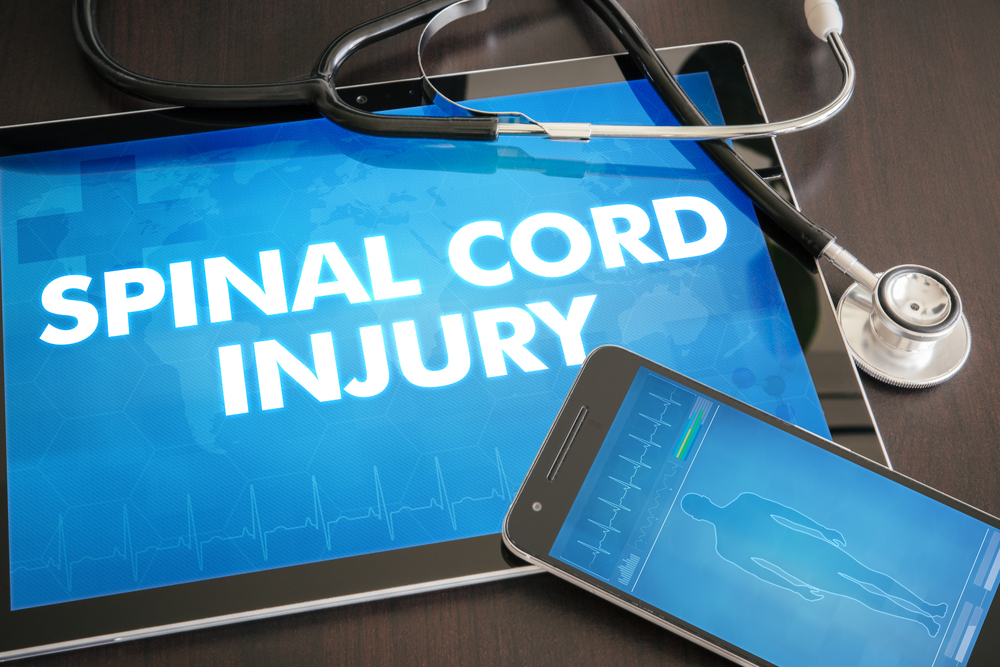Spinal Cord Injury Lawsuit
The Legal Process of a Spinal Cord Injury Claim
Suffering a spinal cord injury (SCI) due to an accident caused by another party’s negligence can be a devastating and life-changing experience. In such situations, pursuing a spinal cord injury lawsuit may be necessary to gain compensation for your medical expenses, rehabilitation, lost wages and other damages. This guide will take you through the legal processes of a spinal cord injury lawsuit, from the initial consultation to the resolution of your case at trial or via a pre-trial settlement.

Step by Step Timeline of a Spinal Cord Injury Lawsuit
Client meeting: The process begins with an initial consultation where the spinal injury lawyer meets with the injured individual and his or her family whether in person, by Zoom meeting or over the phone. This initial meeting allows the lawyer to understand the circumstances of the injury, gather essential information and assess the viability of the case. Every case is different, and it’s vital to have a legal professional analyze and assess your case at this stage before proceeding.
Case evaluation: The lawyer will conduct an in-depth assessment of the case, including the severity of the injury, liability factors, names of witnesses, available evidence and potential damages and losses. This evaluation helps determine the strength of the case and the appropriate legal strategies which can follow.
Legal research: The lawyer will conduct legal research to understand the relevant laws, regulations and precedents applicable to the case.
Evidence collection: Gathering evidence is a crucial step. This may include obtaining the defective or dangerous product, medical records, accident reports, witness statements, expert opinions and any other relevant documents or information pertaining to your spinal cord injury or traumatic brain injury.
Scene inspection: In some cases, lawyers may need to visit the accident scene to gather additional information and assess the conditions that led to the injury.
Defendant identification: The lawyer will identify all potentially responsible parties, which may include individuals, companies, corporations or government entities. This step is crucial in determining who should be held accountable for the injury.
Filing deadlines: Lawyers will pay close attention to the statute of limitations regarding an injury in that particular state, as well as filing deadlines, to ensure that the lawsuit is filed within the legally prescribed time frame. In a few states, the filing deadline or statute of limitations is as short as one year, and in other states two to five years.
The deadline must be researched and known immediately. This is why it is so important to consult with an injury attorney as soon after the accident as possible. A lawsuit cannot be filed if a certain amount of time has passed between the date of the injury and the date of attempting to file a claim.
Legal strategy: The lawyer will devise a legal strategy tailored to the specific case. That includes determining whether to negotiate a pretrial settlement out of court or proceeding to trial.
Expert consultation: In complex spinal cord injury and TBI cases, lawyers often consult with medical experts, accident reconstruction specialists and other professionals to strengthen the case and provide expert testimony.
Drafting the complaint: The lawyer drafts a formal complaint or personal injury lawsuit outlining the allegations, injuries and damages. The filing of this document initiates the lawsuit process.
Service of process: The complaint is then served to the defendant or defendants, who then have a specified period in which they must respond or answer the lawsuit.
Interrogatories and document requests: Lawyers will exchange written questions (interrogatories) and document requests with the opposing party to gather more information about the case, past incidents, and names of witnesses.
Depositions: Depositions involve sworn testimony by witnesses, including the injured party, experts, and other relevant individuals. These testimonies are recorded out of court but can be used in court. These depositions will be of the client, doctors, witnesses, experts, engineers, life care planners, economists, corporate representatives, and internal personnel with knowledge of the problems or facts.
Pretrial settlement discussions: Lawyers will engage in negotiations with the opposing party to explore the possibility of having a mediation (similar to arbitration) in hopes of settling out of court before a trial. Settlement offers may be exchanged, negotiated and rejected.
Trial preparation: If a satisfactory settlement is not reached, the lawyer will continue to get ready for trial. That includes jury selection, preparing witnesses, and finalizing legal arguments.
Trial proceedings: If there is no settlement out of court before trial, then the trial will begin, and both sides will present their case in court. The spinal cord injury lawyer will advocate for the injured party, present evidence and cross-examine witnesses.
Verdict: At the trial’s conclusion, the judge or jury will deliver a verdict by determining whether the defendant is liable and, if so, the amount of damages to be awarded.
Post-trial motions: After a verdict is rendered, lawyers may file post-trial motions to address legal issues that may have arisen during the trial.
Appeals: If either party is dissatisfied with the trial outcome, that party may file an appeal, which can extend the legal process further.
Throughout the entire process, effective communication between the injury lawyer and the injured party is essential. The lawyer will keep the client informed about case developments, advise the client on decisions to be made, and provide support during what can be a challenging time. Handling a spinal cord injury lawsuit against a negligent defendant or big corporation is a complex and demanding process that requires legal expertise and dedication. By following these day-to-day steps, experienced personal injury lawyers can aim to secure justice and compensation for the injured party and their family.
Frequently Asked Question
If you or a loved one has suffered a spinal cord injury (SCI) due to the negligence of another party, you may be wondering how much monetary compensation or damages you can recover by means of a filing spinal cord injury lawsuit for your losses.
A personal injury claims for spinal cord injuries aim to provide victims with financial compensation to cover their medical bills and expenses, their ongoing rehabilitation costs, their lost present and future income (wages) and other damages which they should not have suffered but did, due to others’ negligence. Not only can the injured party recover compensation, but in many jurisdictions your spouse and children may also have claims if the spinal cord injury effect of your injury causes loss of enjoyment of life and consortium and other damages to them as well.
The amount of money you can recover in such a spinal cord injury claim depends on various factors and circumstances for your particular case, as every case is unique. In this guide, we will explore key factors that can influence the compensation that is ultimately awarded in spinal cord injury cases.
Read More
Suffering a severe spinal cord injury (SCI) or traumatic brain injury (TBI) due to an accident can be a permanent life-changing event. These injuries often result in long-term or permanent physical, emotional, and financial challenges.
When facing the prospect of such challenges, filing a personal injury lawsuit can be a crucial step in securing your future and ensuring that you and your loved ones receive the support and financial compensation that you need to move forward.
Filing a spinal cord injury lawsuit, if successful will alleviate many of the costs and expenses due to your spinal cord injury or traumatic brain injury accident in various areas.
Read More
If you’re a paraplegic or quadriplegic who has suffered a spinal cord injury (SCI) due to the negligence of another party, you may be considering pursuing a lawsuit to seek compensation for your damages. To succeed in holding a defendant in such a lawsuit liable or responsible for your severe spinal cord injuries, a personal injury lawyer must prove certain elements in court. These elements are essential to establish the defendant’s negligence and to secure the monetary compensation that an accident victim deserves. In this comprehensive guide, we will explore what is necessary for a personal injury lawyer to hold a defendant liable for damages in a spinal cord injury lawsuit, and then either negotiate a favorable out-of-court settlement or take a case to trial.
Read More
When it comes to seeking legal representation for a spinal cord injury (SCI) case, choosing the right attorney is crucial. If you make the wrong choice, you may not receive the payments to which you are legally entitled after someone caused your injury.
Spinal cord injuries are life-altering, with complex medical, legal, emotional and psychological aspects. To ensure that you receive the best possible legal advocacy, it is essential to hire an attorney with the qualifications and expertise to handle your SCI case efficiently and effectively.
In this comprehensive guide, we explore the qualifications and attributes which set top SCI attorneys apart, and why choosing the right lawyer is vital to achieve a successful outcome in your case.
Read More

Get the Best Spinal Cord Injury Lawyer for Your Case
Request Your FREE CONSULTATION Today!
Call (800) 883-2020 or fill out the form below to contact our team.
The legal process of a spinal cord injury lawsuit is complex and can be lengthy. Throughout the journey, it is essential that you have an experienced personal injury attorney by your side to advocate for your rights and your interests.
If you or a loved one in your family has suffered a spinal cord injury due to the negligence of another party, seeking the best or top legal representation is critical to ensure that you receive the compensation needed for your medical care, rehabilitation and pain and suffering. Rebuilding your life will be difficult, but it can be made easier by securing a favorable judgment in a successful spinal cord injury lawsuit. At Spinal Cord Injury Lawyer, we focus on representing spinal cord injury victims, and we have a proven track record of success in such personal injury cases.
Our dedicated team of attorneys is committed to guiding you through every step of the legal process, from the initial consultation to the resolution of your case. Contact us today for a free consultation and review of your case and let us be your trusted partner on the path to justice and economic recovery. Such a journey should not be attempted alone. Rather, you must have a skilled spinal cord injury lawyer fighting for your legal right to receive payments for your spinal injury.
